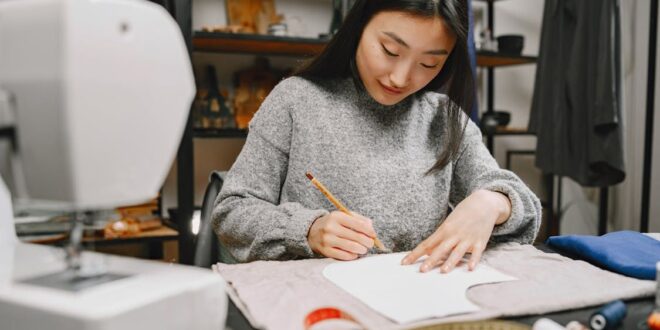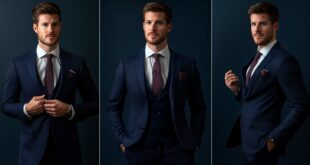Whether imagining chic dresses, cozy knits, or playful plushies, sewing patterns empower anyone to stitch stunning creations matching personalized visions through guided DIY making. With customizable design blueprints, cut layouts, and foolproof directions, patterns unlock rewarding creativity, converting crafting dreams into professional-looking finished pieces using fundamentally straightforward skills practicable for beginners.
What are Sewing Patterns?
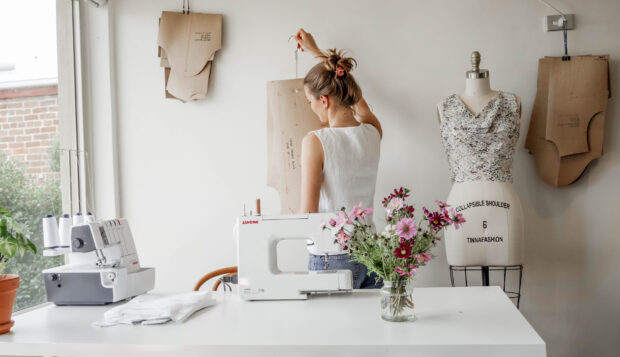
Sewing patterns are detailed instructions that guide you in constructing a garment from scratch. Commercial new sewing patterns provide all the templates and information needed to sew specific designs. This includes:
Pieces:
Full-sized paper outlines of pattern pieces that you trace onto fabric before cutting. There are separate pieces for each garment section like sleeves, collars, pockets, etc.
Sizing:
Patterns list finished garment measurements so you can select your size. Some have multiple sizes printed on one pattern sheet.
Cutting Lines:
Printed lines indicate where to place templates and cut around when preparing fabric pieces before sewing.
Seam Allowances:
Recommended seam widths are marked for stitching pieces together properly. Wider allowances provide more adjusting room.
Markings:
Helpful symbols and lines with written directions signal where to transfer all necessary construction details like darts, pleats, notches, buttons, and buttonholes.
Instructions:
Step-by-step guidance with numbered details and diagrams walks sewers from layout through final touches for flawless results matching pattern samples.
The Advantages of Sewing with Patterns
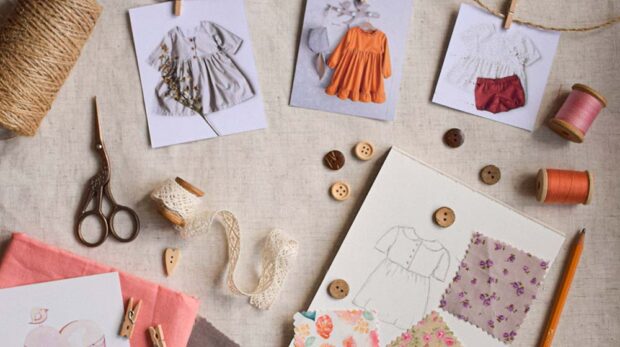
Here are some of the key benefits of using sewing patterns:
- Variety and Choice: Thousands of patterns offer diverse garment designs beyond basics to explore unique style interests affordably.
- Customization: Sewing your pieces means complete control over fabrics, embellishments, adjustments, and fit.
- Perfect Fit: Sewn clothes fit your exact curves, proportions, and sizing needs through intentional tweaks absent in off-the-rack pieces.
- Cost-Effective: Home sewing avoids designer markups and labor, making custom garments financially accessible.
- Sense of Accomplishment: No experience feels more rewarding than wearing a stylish, comfortable garment you crafted through a passionate effort from start to finish.
Choosing the Right Sewing Pattern
With the vast range of fun sewing patterns available featuring diverse styles, fabrics, skill levels, and complexities, selecting the optimal first pattern proves key to ensuring a successful starter project that builds confidence for tackling more advanced designs later. Consider the following factors:
Skill Level:
Patterns print recommended experience levels on the packaging. As a beginner, opt for “easy” or “beginner” patterns requiring basic stitches, common garment types without tricky details, and few pattern pieces to assemble. This prevents frustration and overreaching abilities.
Garment Style:
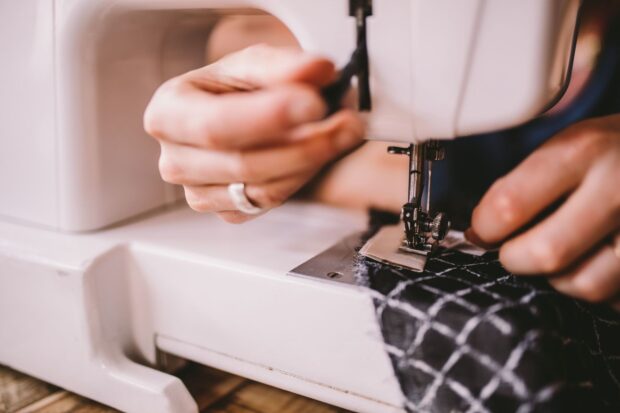
Evaluate desired end-uses, whether constructing fashionable apparel, decorative items, or whimsical toys, when narrowing preferred silhouettes, structural design elements, and embellishment suitability. Reference finished sample photos on patterns for real visuals minus doll sketches.
Fabric Types:
Fabrics dictate suitable patterns based on given stretchiness, weight, and texture. Lightweight woven cotton or knits work for initial starter patterns. Avoid specialty materials like silks or sequined textiles requiring advanced skills early on.
Pattern Format:
Home printers allow downloading printable PDF pattern files, offering sustainability and style variety from indie designers sold online. But new sewers benefit from traditional paper-format patterns, allowing hands-on tracing practice without the necessity of a personal large-format printer should difficulties arise. Feel prints first to ensure clear readability, too.
Inclusive Sizing:
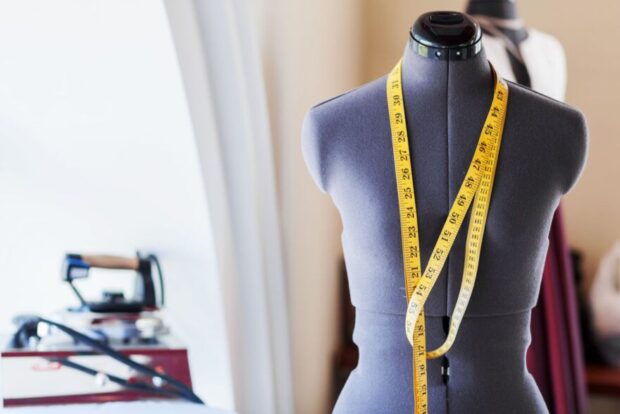
Look for size grading spanning a wide measurement range on pattern pieces or multi-size nesting allowing custom fitting numerous body shapes through simple alignment combinations. Measure accurately first for the best size selection.
Comprehensive Instructions:
Well-illustrated directives with technical flat sketches visualizing key steps aid comprehension of special terminology or methods like installing zippers, lining, buttonholes, etc. Supplementary written explanations assist all learning styles.
With numerous customer reviews on pattern-specific challenges and recommended online guidance across sewing communities, selecting an appropriately matched first design is achievable. If initial choices prove overly ambitious, stay open to trying alternative suggestions. Start simply promoting lasting enjoyment.
Essential Sewing Tools for Beginners
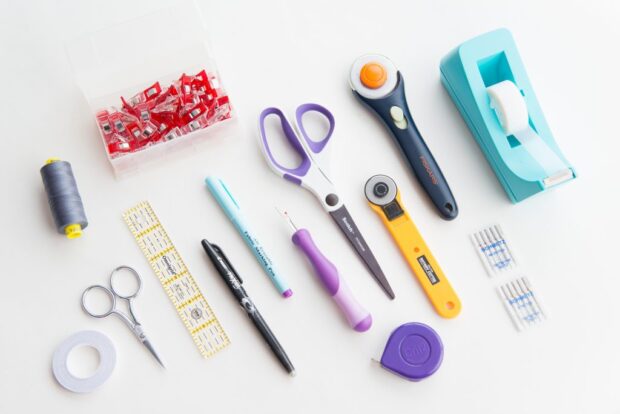
Starting, focus purchases only on versatile basics. You can upgrade specialty tools later as skills develop. Beginner essentials typically include:
- Sewing Machine: A quality basic model with options for straight stitching and zigzag stitching suits starter needs well for handling wovens and knits.
- Fabric Scissors: Invest in shears dedicated solely to cutting fabric to preserve their sharp precision.
- Rotary Cutter and Cutting Mat: This circular blade on roller wheels speedily cuts pattern pieces accurately. Self-healing mats prevent surface damage.
- Measuring Tape: Cloth tapes with clear metric/inch markings are vital for taking body measurements and pattern sizing.
- Pins and Straight Pins: Pins temporarily connect fabric pieces pre-stitching. Ultrafine straight pins mark fitting adjustments.
- Seam Ripper: This small tool removes basted stitches or seaming mistakes without damaging fabric. Vital for modifications.
- Iron and Ironing Board: Ironing keeps work pieces neat, flat, and wrinkle-free at all stages. It is an essential finishing step.
- Sewing Needles: Match machine needle sizes and types to chosen fabrics. Ballpoint and stretch options suit knits best.
- Thread: Use all-purpose threads that coordinate well with fabric colors. Natural or polyester options work for most beginner projects.
- Sewing Gauge: This ruler tool marks seam allowance widths for accuracy. Extremely useful.
Getting Started with Your First Sewing Project
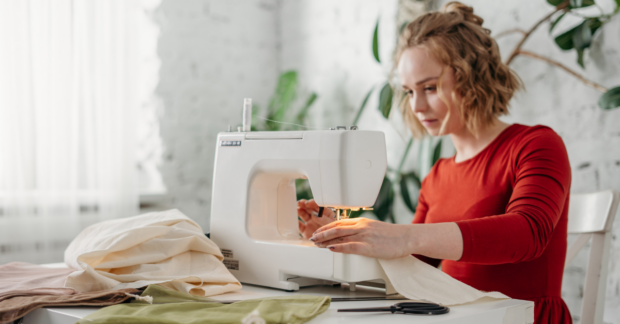
When tackling your first pattern, simplify success by:
- Prepping the Fabric: Wash, dry, and neatly press all fabric before cutting to prevent shrinking issues later.
- Layout and Cutting: Carefully align pattern pieces on fabric grain lines, then use weights, pins, or pattern weights to prevent shifting as you accurately cut around paper templates with scissors or a rotary cutter. Transfer all markings from pattern pieces to cut fabric parts using tailor’s chalk before removing pins.
- Marking the Fabric: Use fabric marking tools like tailor’s chalk, tracing wheel, or temporary marking pens before stitching to note darts, pleats, button placements, and other special details.
- Sewing the Pieces Together: On your machine, sew smaller constructs like collars before working outward to join full garment sections by carefully aligning seams to markings, easing fabric into notches so points line up, matching corners, etc. Check fit on dress form frequently.
- Finishing Touches: Finish by steaming pieces, making final adjustments around armholes and hems, and closing seams. Sew buttons/buttonholes, and add trimmings, tassels, and personalized embellishments by hand.
Finally, wearing your custom creation after diligently navigating each step brings immense joy and confidence. There’s so much to learn, but each project builds skills. With the right patterns and tools, sewing empowers beginners to expand their creativity through versatile fabrics transformed into unique garments unmatched in cost, quality, and self-expression potential. Welcome to making.
Conclusion
Sewing patterns dissolve beginner barriers through packaged guidance, demystifying construction processes into sequential achievable steps. By selecting appropriately matched formats and fabric types complementing current skill levels, then simply tracing cut lines before connecting indicated edges, meticulous handmade outcomes emerge with polish rivaling tailored quality. Blend creativity with templates guiding measurable progress through relaxing sewing built on patterns’ solid foundations for confidence.
 Jewel Beat
Jewel Beat
